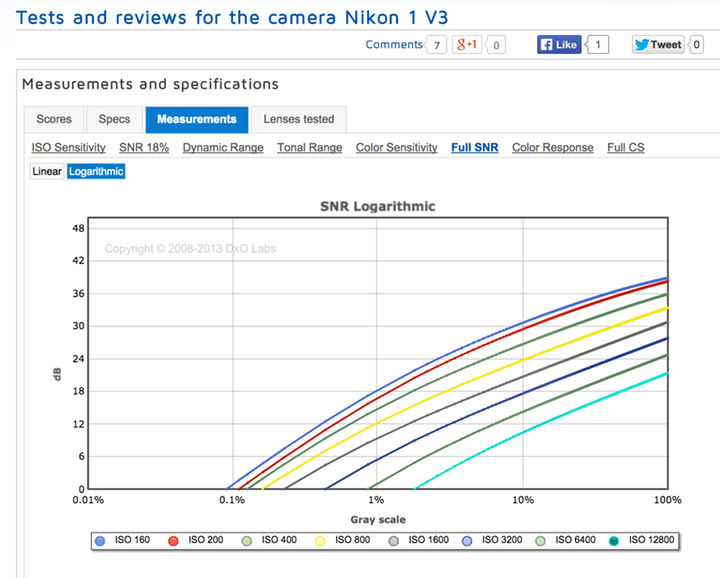For a number of years there has been a raging debate as to whether, in a light-constrained environment, it is better to keep a low ISO and under-expose (correcting in post) or to raise the ISO to get a correct exposure. By “better”, I mean overall higher SNR, DR, color acuity etc.
Intuitively you would think it would not make any difference. Since the amount of light hitting the sensor is constrained by the aperture setting and shutter speed ONLY, and since ISO is varied by amplifying both the signal and noise coming off the sensor, having a lower ISO and correcting in post should be identical to having a higher ISO and no correction in post (provided the corrections are the same).
In practice things are more complicated. In particular, there are additional sources of noise which can enter the system and degrade overall SNR. One such source is call read noise which is a noise source independent of the signal amplitude. Read noise will further degrade SNR on low level signals entering the ADC. This implies that read noise affects low ISO settings more than high ISO.
http://theory.uchicago.edu/~ejm/pix/20d/tests/noise/#readnoise
One way to visualize this is to measure how SNR varies with signal amplitude. Since sensor noise is “constant”, independent of signal amplitude, you would expect that SNR would degrade (logarithmically) with reduction in signal. This is illustrated in the DXO measurments. Here are examples with the Nikon D7100 and the SONY A6000:


If there are no other sources of noise, except from random sensor photons, you would expect these lines to be linear (on a log scale). However, you can see there is a slight curvature as the gray scale level reduces. This is due to the other noise sources affecting these lower level signals. For the D7100 and the A6000, this non-linearity is minor and has minimal affect on the “ISOLess-ness” of the camera.
On the other hand, look at the same graph for the Nikon 1 V3:

Clearly, these graphs are much more non-linear. There are a number of possible reasons for this.
1. Read noise has a far greater affect on low level signals in the V3
2. The V3 has a compressed RAW format which is not lossless. According to Hogan, there is some “smoothing” at higher ISO’s and other components to the compression algorithms which could affect the linearity of this graph.
Whatever the reason(s), clearly there is a greater negative affect on SNR at low ISO’s than on high ISO’s. This makes it unlikely that the V3 will be ISO-less.
In order to visualize this, I set up a test where I took two shots of a scene - shot 1 was at ISO 1600, correctly exposed. Shot 2 was at ISO 200, 3-stops under exposed. The idea is to “push” this latter shot three stops and see the difference (in noise) in the two images. Again, in the absence of other (significant) factors, both images should look the same.
First, for the D7100. The image on the left is straight out of the camera. The image on the right is pushed three stops of exposure. Both are white balanced to a gray card. All are 100% crops.
While difficult to see clearly, each image is pretty well identical, suggesting that, in this ISO range, the camera does not care about ISO values. In fact, it may be better to under expose with lower ISO in order to eliminate blown highlights.

We see similar results for the A6000.

Here are the results for the V3.



Hopefully, you can see there is a significant difference in noise between the two images. The V3, pushed, has much more noise than the high ISO image.
The conclusion is that, first, the D7100 and the A6000 can be considered “ISO-less” in the range up to ISO 1600. Second, the V3 (and also the V2, separately tested) is certainly not ISO-less. For these cameras it is clearly better (from an SNR pov) to up the ISO rather than under expose